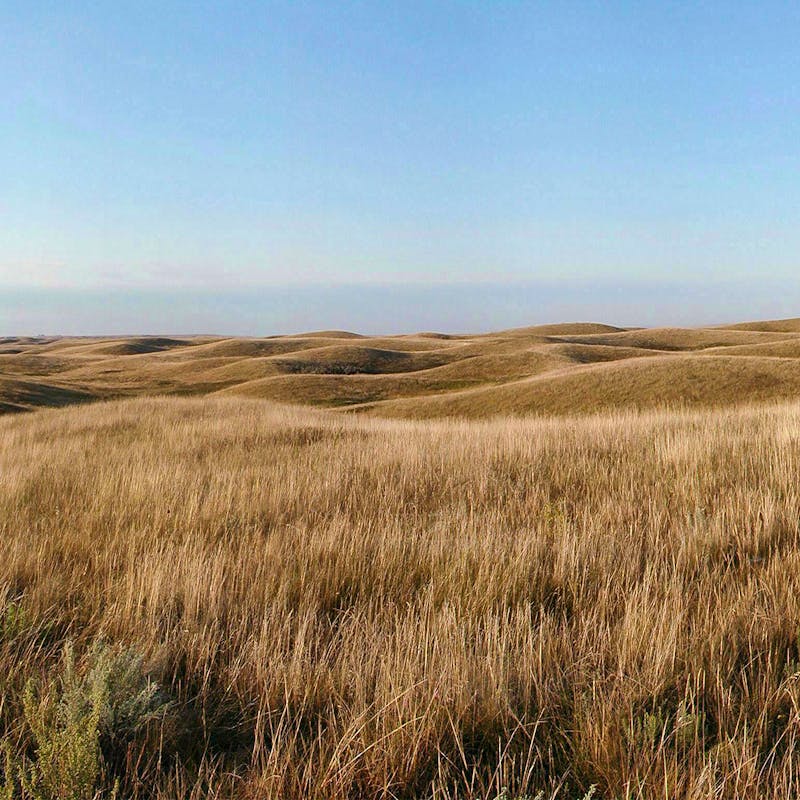Tweet“This extraordinary effort would not have been possible without the work of SPLT and CSU. As a keystone species, bison are absolutely critical to the long-term health of the Great Plains. This successful transfer will help restore these genetically-pure bison to their historic range in Southern Colorado while also revitalizing the surrounding grassland.”
Last Friday, Southern Plains Land Trust (SPLT), Colorado State University (CSU) and Defenders of Wildlife successfully completed the week-long transfer of 10 bison, marking the beginning of a new conservation herd at SPLT’s Heartland Ranch Nature Preserve in southeastern Colorado. After an adjustment period, the bison will be released into their larger pasture.
“We are thrilled to help bring back the American bison by starting a conservation herd. Bison are essential to maintaining the shortgrass prairie, and we’re so pleased to partner with CSU and Defenders of Wildlife to take this important conservation action,” said Nicole Rosmarino, executive director of Southern Plains Land Trust.
The bison—including seven adult females, two adult males and a male calf—were part of the CSU research herd at the university’s Foothills Campus. Next year, additional bison from CSU’s Laramie Foothills Bison Conservation Herd will also arrive at Heartland Ranch.
“One of the main drivers behind our research and establishment of the Laramie Foothills Conservation Herd is to support bison conservation efforts across the country,” said Jennifer Barfield, assistant professor in the College of Veterinary Medicine and Biomedical Sciences at Colorado State University. “While we have given bison to a variety of conservation and cultural groups around the United States, there is something special about being able to support organizations like SPLT that are working to restore bison in Colorado, where the last wild bison in North America existed outside of Yellowstone National Park. Partnerships like this are critical to bison restoration.”
Defenders of Wildlife contributed funding for transportation costs and bison fencing around the bison management area. Defenders has long advocated for the establishment of additional large bison conservation herds across the species’ historical range, partnering with land trusts, tribal nations, the National Park Service, and other nongovernment organizations to establish new herds with the bison managed as wildlife as opposed to livestock.
“This extraordinary effort would not have been possible without the work of SPLT and CSU,” said Chamois Andersen, senior Rockies and Plains representative at Defenders of Wildlife. “As a keystone species, bison are absolutely critical to the long-term health of the Great Plains. This successful transfer will help restore these genetically-pure bison to their historic range in Southern Colorado while also revitalizing the surrounding grassland.”
More than 30 million wild bison once roamed North America before facing mass slaughter in the 19th century. By the late 1800s fewer than 1,000 animals remained, mostly in captivity and only a few left in the wild in a remote area of Yellowstone. The transferred herd is descended from these last genetically-pure bison, making it one of a growing number of conservation herds that have been established to bring wild bison back to the plains.
Established by Southern Plains Land Trust in 2015, the Heartland Ranch Nature Preserve contains over 25,000 acres of shortgrass prairie, with an additional area of 18,000 acres under contract. By expanding Heartland Ranch to 43,000 acres over the next four years, the bison will have ample room to roam and grow over the years. Heartland is already home to a variety of native species, including pronghorn, mule deer, white-tailed deer, elk and black-tailed prairie dogs. The preserve is one of the largest prairie habitat conservation areas in the Southern Plains, making it an ideal location for bison to roam as wildlife. The new herd will also contribute to the American Bison Society and Department of Interior effort to create a metapopulation of bison from Canada to Mexico.
Video B-roll is available for interested members of the media.
###
The Southern Plains Land Trust creates and protects a network of shortgrass prairie preserves, which ensure a future for all native animals and plants. Established in 1998, the Southern Plains Land Trust has protected over 32,000 acres of shortgrass prairie. For more information, visit southernplains.org and follow us on Facebook at southernplainslandtrust.
Colorado State University - Founded in 1870 as the Colorado Agricultural College, Colorado State University is now among the nation’s leading research universities, with annual research expenditures that top $400 million. The CSU System includes the flagship campus in Fort Collins as well as CSU- Pueblo and CSU-Global. In Fort Collins, CSU currently enrolls about 33,000 students, including 4,000 graduate students and 580 in the Doctor of Veterinary Medicine program, and has more than 1,800 faculty members working in eight colleges. CSU’s DVM program consistently ranks among the top three veterinary medicine programs in the nation.
Additional Contacts:
Nicole Rosmarino, Southern Plains Land Trust, 720-841-1757, splt@southernplains.org
Mary Guiden, Colorado State University, 206-854-3786, mary.guiden@colostate.edu
For over 75 years, Defenders of Wildlife has remained dedicated to protecting all native animals and plants in their natural communities. With a nationwide network of nearly 2.1 million members and supporters, Defenders of Wildlife is a leading advocate for innovative solutions to safeguard our wildlife for generations to come. To learn more, please visit https://defenders.org/newsroom or follow us on X @Defenders.
Media Contact
News

Colorado Releases Wolverine Reintroduction Plan, Defenders Stands Ready to Support


